How Activist Investors Flubbed Gender Equality in 2018


New research suggests that activist hedge funds have been slow to move the gender equality needle - as only 13 percent of the board nominations these funds made during 2018 were women.
The #MeToo and #TimesUp movements were supposed to be a wake-up call to shake out all that’s wrong in many a workplace. One could argue that the discussion about the scourge of sexual harassment that has long festered in many an office or shop floor is at least being discussed and addressed. But when moving up the corporate ladder, as TriplePundit’s Mary Mazzoni and other writers have pointed out, the glass ceiling in many C-suites and within corporate boards of directors is still proving to be a tough one to crack.
This inclusion problem, or at a minimum a lack of awareness, is still apparent within activist hedge funds as well. According a recent report published by the shareholder activism research firm and publication Activist Insight, activist hedge funds overall have been slow to move the gender equality needle. Activist Insight’s researchers say that of the 143 board members that activist hedge funds nominated during 2018, only 19, a meager 13 percent, were women.
In total, Activist Insight tracked 60 investments funds – and found that only 16 of them nominated women to be on boards of directors.
“In a year when there was a heightened awareness about the long-standing inequality of women in the workplace, activist investors could have been expected to make a bigger push for board equality,” wrote Stephen Gandel for Bloomberg News earlier this week.
This oversight by activist investors is ongoing despite plenty of research that suggests companies with women on their boards tend to perform better than their peer companies with all-male boards.
Fundamentally, the reason is simple – a diverse set of people sitting at a board meeting, more often than not, will offer various opinions and suggestions for how to move an organization forward – in contrast to a board, which, pardon the pun, is full of “yes men.” As Aflac’s CEO, Don Amos, has been quoted as saying time and again, he is already aware of what a 60-something white man thinks, so there is no reason to surround himself with other 60-something white males.
But companies that have found themselves mired in public relations challenges over the past year are apparently not getting the message. For example, Papa John’s, which had to deal with the racially-tinged shenanigans of its founder and former CEO, John Schnatter, diluted his power by adding three new members to its board. But the three new directors, added as part of the hedge fund Starboard Value’s investment of $200 million in Papa John’s, are all male.
Another example is when athenahealth found itself in the middle of controversy due to allegations of sexual misconduct made against its former CEO. However, after Elliott Management bought out the healthcare technology company, yet another man was appointed as the company's CEO. A similar story can be told by SRS Investment Management, which was in the position to add two new directors to Avis Budget Group’s board – and did so, with both new appointments male.
We’ll certainly see more activist investors wield their power over the companies which they have included within their portfolios. “One certainty is that public companies have accepted activist investors as important shareholders, and have taken increasing efforts to seriously consider, and often accommodate, their suggestions,” concluded Activist Insight’s researchers.
Now, if only these same investors start taking diversity and inclusion seriously by considering such “suggestions" - at the very least because the evidence suggests that taking such steps is better for these companies’ performance - we may just start seeing more boards that look more like America. These changes, in the end, will help bolster these companies’ brand reputation, recruitment efforts and yes, could even lead to an improvement in their financials.
Image credit: WOCinTech Chat/Flickr
With Sea-Level Rise, A Changing Forecast for Port Logistics


With climate change risks such as sea-level rise an ongoing threat, ports need to be prepared for the potentially damaging effects of climate change - but these types of renovations could cost millions, even billions, of dollars.
For port authorities and logistics companies alike, sea-level rise and infrastructure concerns are coming into view faster than ever before. With extreme weather events happening more frequently and sea levels estimated to rise as much as four feet by 2100, what used to be cemented into a master plan that could span many decades is now under water.
Ports need to be prepared for the potentially damaging effects of climate change, but these types of renovations cost millions of dollars. Port authorities, like many other governmental organizations, are expected to make tough financial decisions regarding infrastructure renovations and construction.
The United States and China are the world’s largest importers, according to data from the World Trade Organization. China is also host to seven of the world’s largest ports by cargo volume. With more than 80 percent of the world’s freight moving by ship, being future-ready isn’t a cost to overlook.
Will the world’s ports be ready for the impending effects of climate change?
In the U.S. alone, according to the American Association of Port Authorities, seaport cargo activity accounts for 26 percent of the country’s GDP. Yet, improving port facility infrastructure for environmental impacts is the smallest line item on the agenda.
China is even less prepared. As industry has grown at record rates, floods, tidal surges and sinking land only intensify the need for bracing ports against changing landscapes.
Take for instance the Port of Shenzhen, which is a collective of ports along parts of the coastline of Shenzhen, Guangdong Province, China. These ports form one of the busiest and fastest growing container ports in the world.
Mangroves once protected the area from rising waters. These mangrove forests provide a crucial role in shielding coastal areas from sea-level rise caused by climate change. Since 1979, 70 percent of the mangroves along the Shenzhen coast have been paved over. Even with the Chinese government’s proposed landfill expansion, the soil, asphalt and concrete supporting this area remain vulnerable to rising waters and erosion.
With so many of the world’s seaports at risk of threat from rising seawater, what can be done?
Preparing ports for environmental impacts
According to a recently published Wall Street Journal article, “ports whose berths are at least 14 feet above sea level at high tide should be safe from flooding for the near future.”
Other infrastructure to take into consideration includes a port’s electric power stations and data servers. Keeping these stations and equipment elevated and as far away from the water’s edge as possible helps to ensure the longevity of a port’s critical operating systems.
Restoring natural habitats, such as mangroves—which appear to be resilient to sea-level rise and likely able to sustain climatic change, will also help to safeguard the land supporting a port.
The Port of Virginia is one example where leadership is beginning renovations that take into consideration the problems rising water levels and intensifying storm surges may present. While the Port of Virginia 2065 Master Plan carefully words such efforts (see page 8), rising waters are a “clear and present problem” as stated by John Reinhart, the port authority’s chief executive.
Moving forward, port authorities around the world are beginning to include climate change effects into their master plans. It’s a shift; and, while the efforts may seem minimal now, time will tell how urgently funds will shift into supporting the land and coastlines supporting these major economic hubs.
Image credit: Axel Ahoi/Unsplash
How Saipem Contributes to SDG 13: Action Against Climate Change


This article series is sponsored by Saipem and produced by the TriplePundit editorial team.
There is now international consensus that the fight against climate change represents the biggest challenge humanity must face in the 21st century. Extreme weather events, failure to reduce carbon emissions and slowness in building climate resilience are among the top risks that pose a serious threat to global stability, according to the Global Risks Report 2019, published by the World Economic Forum in January. Last year, the Intergovernmental Panel on Climate Change (IPCC) published a special report describing the dramatic effects of climate change and the immediate steps that must be taken to limit warming in the future.
The Task Force on Climate-Related Financial Disclosures (TCFD) had published recommendations for the effective disclosure of climate-related financial risks about a year before the IPCC's report. Following its Action Plan on Financing Sustainable Growth released in March 2018, the Technical Expert Group on Sustainable Finance (a technical working group set up by the European Commission) followed up with its own report, “Climate-Related Disclosures."
The report compares the TCFD’s recommended disclosures to the EU’s directive on non-financial and diversity disclosures, and highlights the common points. The report proposes climate-related disclosures, differentiated based on companies’ exposure to climate change, to assist the European Commission in its revision of the current non-binding guidelines for disclosures, formally titled Directive 2014/95/EU.
So far, the energy industry has taken steps to limit the emissions of greenhouse gases from its own operations. However, the challenge will be to meet the increasing demand for energy by the global population, which is estimated to exceed 9 billion by 2040, while tackling climate change. Although the link between climate-related indicators and financial impacts is complex, climate-related risks and opportunities undoubtedly affect the future strategy and perspectives of an international and multi-business technological solutions provider like Saipem. In fact, Saipem can play an important role in helping and supporting its clients as they seek to meet the needs of a fast-changing world.
Considering the above, following the recommendations of the TCFD, Saipem published its first disclosure on tackling climate change, approved by its board of directors last month. The document proves Saipem’s commitment to providing effective disclosure to its stakeholders on issues that could influence the company’s operations and to demonstrating how it is equipped to run its business in the long term. The company analyzes and monitors the potential implications of climate change on its business and operations, such as any other issues in the medium/long-term, and integrated this consideration into its strategic plans.
Contributing to SDG 13: Climate action
Saipem plans to gradually reduce its dependence on the fossil fuels business by extending offers to its clients in less climate-impacting fields, investing in renewable technologies, developing more sustainable fossil fuel uses, and diversifying its activities. Saipem is making significant efforts to improve the efficiency of its assets and operations to reduce GHG emissions.
Saipem's climate change disclosure also describes main climate-related risks and opportunities and the process for their identification, assessment and management. As requested by the TCFD, Saipem discloses the time horizon, the magnitude, and the likelihood of these risks and opportunities. Last, but not least, regarding climate-related opportunities, Saipem estimated more than 2 billion euros in revenues in a three-year time frame, due to market context and ongoing commercial efforts.
Metrics and emissions reduction initiatives
Saipem discloses its main energy and emission indicators and provides practical examples of emission-reduction initiatives applied to its business context. For example, the electrification of two onshore drilling rigs in Kazakhstan demonstrates a fruitful client-contractor partnership aimed at achieving maximum efficiency and reducing environmental impacts.
Moreover, in 2018 Saipem finalized its Group Strategic GHG reduction plan, which includes all Saipem Divisions. This represents a fundamental milestone and concrete evidence of Saipem’s Tackling Climate Change strategy.
In order to further improve and detail its climate-related disclosures, Saipem is cooperating with Fondazione Eni Enrico Mattei (FEEM), an international research center, on a project in Italy. Co-sponsored by Saipem, this project is a multi-stakeholder initiative aimed at analyzing climate-related risks for companies and promoting well-founded and science-based public discussion.
Image courtesy of Saipem
Parkland, Year 2: Gun Safety and the Business Response to Gun Violence


One year ago today, yet another mass shooting occurred in the U.S. This tragedy was different. This time, the survivors did not wait for the adults to act. This time, they took the fight to the streets, and to the media. This time, they rallied millions of their peers, parents and supporters to advocate for gun safety - and this time, they had the backing of business.
One year ago, on February 14, 2018, yet another in a long, unrelenting series of mass shootings took place in yet another school in the U.S. This one occurred at Marjorie Stoneman Douglas High School in Parkland, Florida. This tragedy was different. This time, the survivors did not wait for the adults to act. This time, they took the fight to the streets, and to the media. This time, they rallied millions of their peers, parents and supporters to advocate for gun safety.
The message was so strong and so clear that it swept more than 1,000 gun safety advocates into office in the 2018 election cycle.
So, what exactly was different? This time, the students and their allies made the business case for common sense gun safety.
Building the case for gun safety
The Parkland wave of activism did not happen in a vacuum. Momentum for a business case was building in the years leading up to last February.
On the business side, one standout example is Levi Strauss. The company has exercised its public voice on behalf of gun safety since 2003. Levi Strauss upped the ante in 2016 after a customer accidentally shot himself in the foot at a Lev’s store. Despite a boycott threat, the company doubled down again after Parkland.
On the grassroots side, the groundswell can be traced to 2012, when Shannon Watts founded the group Moms Demand Action for Gun Safety in the aftermath of the Sandy Hook Elementary School shooting in Connecticut.
State level Moms Demand chapters quickly formed across the U.S. and the group affiliated with Everytown for Gun Safety, an umbrella organization that includes the 1,000-strong coalition Mayors Against Illegal Guns.
The Black Lives Matter movement also raised the bar on youth activism in relation to gun violence. The Parkland students were quick to connect with other youth allies across the country, including the Chicago-based Peace Warriors and BRAVE (Bold Resistance Against Violence Everywhere).
The organization Guns Down America also laid the groundwork for a business approach to advocacy for gun safety in 2016, in the aftermath of the Pulse nightclub shooting in Orlando, Florida. Guns Down drew media attention with a campaign against FedEx, citing the company’s enrollment in the NRA’s discount program.
FedEx rode out the storm and the campaign didn’t seem to gain much traction with the public at the time. However, Guns Down put the issue of reputational risk on the table. That element of brand identity became a point of focus for the wave of activism propelled by the Parkland students, which zeroed in on the toxic, anything goes culture of gun ownership fostered by the National Rifle Association.
Gun safety becomes a reputational risk issue
The focus on a powerful lobbying organization provided U.S. businesses with a platform for solidarity with activists and highlighted brand identity with an eye on rising public sentiment in favor of action on gun safety.
Last year, Forbes contributor Elizabeth MacBride took a close look at the Guns Down campaign against FedEx and observed:
“For years, the business community, especially businesses that sold or dealt in guns, steered clear of angering vocal and politicized gun owners. (In the early 1990s, Smith and Wesson suffered a boycott when it tried to reach a compromise on gun laws.). Guns Down gave companies something to worry about on the left side of the spectrum, too -- and a certain amount of cover if they wanted to step out of line.”
After Parkland, the floodgates for business action opened, NRA or not. Dick’s Sporting Goods was one of the first to impose new controls on guns sold in its stores. CEO and Chairman Edward Stack echoed the Parkland activists’ argument with this explanation:
“Our thoughts and prayers are with all of the victims and their loved ones.
But thoughts and prayers are not enough.”
Kroger, Walmart and L.L. Bean also announced that they would restrict gun sales in the absence of legislative action. REI, which does not sell guns, also announced that it was suspending its relationship with Vista Outdoor, the parent company of Savage Arms.
Another significant action came when the global investment firm BlackRock leveraged its CSR profile to provide its clients with an opportunity to pull their investments out of weapons manufacturers.
As for the NRA itself, the organization’s sprawling network of business-to-business relationships began to crumble shortly after Parkland. Leading household brands like Chubb, MetLife, Enterprise, Hertz, Avis, United, Delta, Symantec (maker of the Norton anti-virus software) were among those announcing that they were dropping their NRA membership or withdrawing from the NRA discount program.
Even FedEx finally gave in — intentionally or not. Last fall, the company quietly dropped its NRA discount, masking the move in an overhaul involving dozens of other underperforming business relationships.
Moving the political needle on gun safety — or not
As a result of the 2018 election cycle, gun safety candidates helped tip the balance of power in the U.S. House of Representatives toward the Democratic party for the first time in eight years.
Not coincidentally, for the first time in eight years the House Judiciary Committee scheduled a hearing on gun safety as one of its first actions in the 2019 legislative cycle. The Committee was previously under Republican control, and it had regularly turned down requests for a hearing from the Democratic Gun Violence Prevention Task Force.
The Committee acted swiftly. Earlier this week, the body passed its first new gun safety legislation in eight years, the Bipartisan Background Checks Act of 2019 (HR-8) and the Enhanced Background Checks Act of 2019 (HR -1112).
The legislation is all but certain to die in the Republican-held Senate even if it passes a vote by the full House. Nevertheless, it marks the first time in eight years that members of Congress will be forced to record their position on gun safety.
That is a major step forward for Congress. However, as the 2020 presidential cycle heats up, Guns Down founder Igor Volsky warns of trouble ahead for gun safety advocates.
In an op-ed published in the Boston Globe earlier this week, Volsky takes note of a "losing strategy” on gun safety adopted by leading Democratic candidates.
Volsky argues that Democratic candidates are taking the wind out of the sails of post-Parkland activism. They still defer to NRA by picking at pieces of the problem instead of addressing it in broad terms that the public now supports:
“If March for Our Lives taught us anything, it’s that Americans are craving leaders who can establish a clear and bold long-term goal for significantly reducing gun deaths. That goal should be building a future with fewer guns.”
It’s not just the Democrats. Last week, Former Starbucks CEO Howard Schultz drew heat from activists for reportedly affirming the trope that gun safety advocates want to take away all guns. Schultz, who still maintains a financial interest in Starbucks, has been mulling an independent run for the White House.
If political leadership on gun safety falls flat again, it may be up to business leaders like Levi-Strauss, Dick’s and BlackRock to fill the void.
And these business leaders will have another long-term challenge on their hands, due to the activism sparked by the tragedy in Parkland: they will be recruiting from a wave of young hires who will want their companies to take a stand on vexing social issues such as gun violence.
Image credit of vigil at Tam High School in Mill Valley, CA after the Parkman tragedy: Fabrice Florin/Flickr
After a Huge Racial Gaffe, Prada Launches Diversity Council


Prada has announced it will launch a diversity advisory council that seeks to “elevate the voices of color” both within the company and across the wider fashion sector.
New York Fashion Week is supposed to be a celebration of the industry’s latest designs, innovation and for some fashion houses, even social responsibility and sustainability. But for Prada, this week has largely been about mending fences after social media fiasco that has been plaguing the 106-year-old Milan-based luxury brand for two months.
After a misstep over a $550 figurine that has led critics to cast Prada as racist, or at least clueless, Prada announced that it will launch a “Diversity and Inclusion” advisory council that seeks to “elevate the voices of color” both in-house and across the wider fashion sector. Filmmaker Ava DuVernay and sculptor Theaster Gates will reportedly co-chair this board.
It’s a step forward for a brand and industry that has long been dismissed as “too white.” As Fast Company’s Elizabeth Segran noted last summer, “The fashion community has shown, over and over again, that it is willing to fight for social justice and progressive causes. So it’s worth asking why it hasn’t done more to grapple with the racial injustice within its own ranks.”
And earlier this decade, Melissa Hugel of Mic noted what she viewed as the lack of diversity and racial sensitivity evident in the fashion press as well, describing Vogue and other publications as having “a disturbing history of ignoring racial diversity and even notoriously featured white models in black face earlier [that] year.”
It’s one thing to trot out lily-white fashion models year after year, on the runway or magazine covers, while giving an occasional wink and a nod to the greater cause of diversity. But Prada has found itself mired in a social media frenzy and calls for a boycott after an attorney, among others, posted images of monkey-themed keychains and trinkets that critics said evoked racist imagery. “I want to know who was in the room at Prada when they decided to launch little monkey keychains with black faces and red lips,” wrote Segran during the ongoing December outcry.
The controversy reached a point where New York City’s human rights commission started an investigation over the figurines in question.
Prada is hardly the only fashion brand to find itself in such crosshairs. Some of Katy Perry’s shoes have been pulled from store shelves after many questioned the sensitivity of having big red lips on black shoes. While we’re on the subject of lips, Gucci found itself addressing controversy over an $890 sweater that bore a resemblance to blackface. Meanwhile, across the Pacific, Dolce & Gabbana had to do more than wipe egg (and pasta) off its face after videos showing an Asian model struggling to eat a massive pizza, cannoli and bowl of spaghetti with chopsticks were derided as racist - with a heaping side of scorn. Fast fashion brands have had some explaining to do as well, such as H&M’s ill-fated campaign last year that showed a young South African child in a hoodie emblazoned with the caption “coolest monkey in the jungle.”
Details of what Prada’s diversity council hopes to accomplish are still unclear as of press time – the announcement has yet to be posted on the company’s media relations site. Bloomberg has noted that this advisory board seeks to train staff on diversity-related issues and will create internship programs in various communities.
The lesson here for brands (and politicians), within and beyond the fashion industry, is simple. If everyone in the conference room and Slack channels who vet products look, talk and think the same, that’s a clue that what may seem like a great idea in the design room or exclusive fashion show may not necessarily resonate with the wider public.
Image credit: Lorenzo Click/Flickr
Green New Deal Kicks Climate Change Debate into High Gear
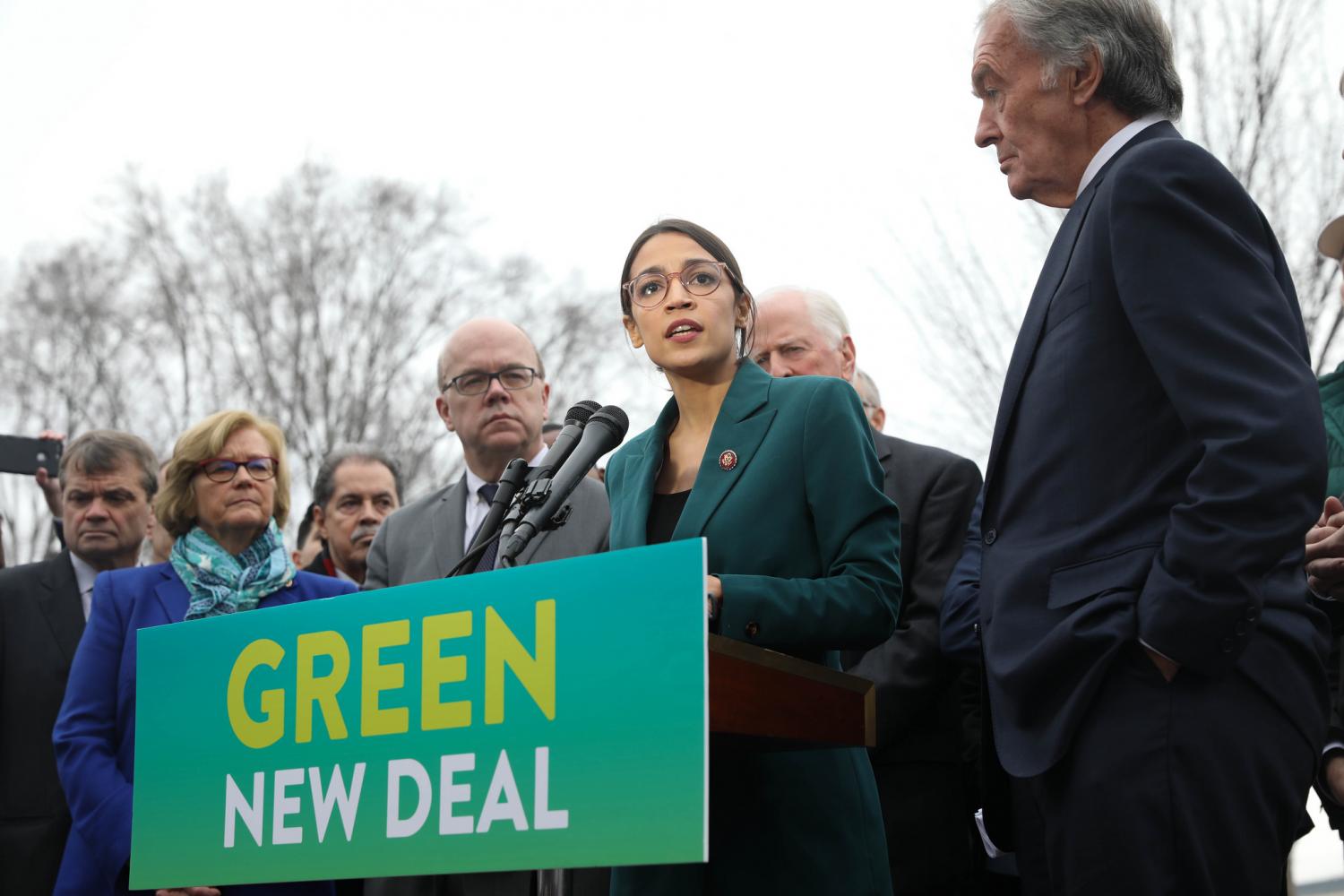
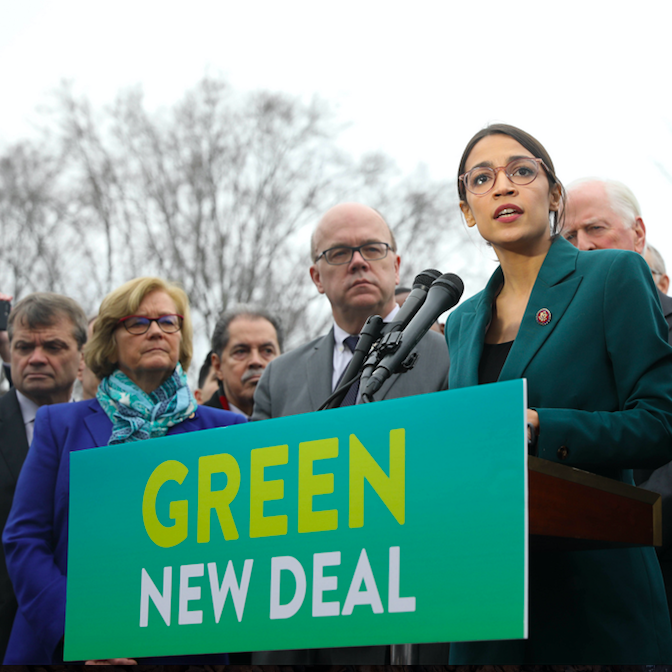
Everyone in the U.S. business community has an opinion about the Green New Deal introduced last week by Representative Alexandria Ocasio-Cortez.
Everyone has an opinion about the controversial Green New Deal introduced last week by Representative Alexandria Ocasio-Cortez (D-NY) and Senator Ed Markey (D-Mass) to mobilize the nation to embrace a rapid, 10-year transition to net-zero carbon emissions and overhaul the nation’s energy, transportation and agriculture sectors.
Opinions have ranged from the positive (Democratic leaders including each of the party’s Presidential candidates lined up to support it); the bad (“a green raw deal that will deliver only socialism and misery,” and “a radical front for nationalizing our economy”); and the ugly (a Twitter war in which Ocasio-Cortez isn’t afraid to exchange barbs with President Trump).
Among the goals of the Green New Deal are to generate 100 percent of the nation's electric power from renewable sources; build a national, energy-efficient "smart" electric power grid; upgrade every residential and industrial building for energy efficiency; and eliminate greenhouse-gas emissions from the transportation sector, as well as from farms, factories and other industries.
What Ocasio-Cortez and Markey have put forward so far is a draft resolution for the House to create a special committee to work out the specifics, but it has already generated significant discussion among policymakers and business leaders.
While some describe the goals as unrealistic, others say they are far from unachievable. Even if its ambitious scope is eventually shot down, at least the Green New Deal has prompted a national discussion on climate change that has been largely absent under the Trump Administration.
The debate is on
And that may ultimately be its purpose, as in “a political prop designed to raise awareness of the urgent risks and the enormous scale of the challenges before us, and to inspire or cajole action,” suggests Patrick Doherty, founder of Long Haul Capital Group, in Greenbiz. “The real service provided by the release of the Green New Deal is the space it creates to have this debate and to develop desperately needed plans to address the single greatest threat to the U.S. and the world.”
If the New Green Deal sparks innovation and new thinking about how to tackle climate change—and the broad set of social and environmental issues that are intertwined with that quest—that seems to be precisely what Ocasio-Cortez had in mind.
“I think that really what I hope we’re able to do as a party and as a nation is rediscover the power of public imagination,” Ocasio-Cortez told NPR.
The nation seems ready, judging from a poll conducted this month by Yale's Program on Climate Communication and George Mason University's Center for Climate Change Communication, the results of which showed 92 percent of Democrats and 64 percent of Republicans backed the plan.
“Unrealistic,” say skeptics
The debate is raging. The nuclear industry went ballistic when a since-retracted fact sheet from AOC’s office said nuclear power, which has zero carbon emissions, had no place in its vision. The Nuclear Energy Institute issued a statement stating that any approach to eliminating greenhouse gas emissions requires “all clean energy technologies, including nuclear, to work together to address that urgent problem.”
American Petroleum Institute president Mike Sommers declared that energy policy “has to be built on reality and not fantasy," and the head of the Institute for Energy Research, a fossil-fuel-backed conservative think tank, told The Hill, “It would be impossible to achieve.”
Other fossil fuel industry commentators were more sanguine. “The Green New Dealers deserves kudos for attempting to shake up established wisdom and accelerate the process of decarbonization,” wrote Leonard Hyman and William Tilles for Oilprice.com, ”but the ambiguity of purpose makes us wonder.”
The U.S. Chamber of Commerce called it an approach where “government asserts control over most of our economy, passing along the enormous costs and bureaucratic inefficiencies to everyday Americans.”
Former Starbucks CEO and prospective U.S. presidential candidate Howard Schulz ripped into the proposal, warning it would be "immoral" to spend trillions of dollars on an "unrealistic" solution.
And unions, despite the Green New Deal’s promise of a “just transition” for current fossil fuel workers through guarantees of health care, jobs and skills training, have voiced their opposition, arguing that the plan could kill jobs rather than create ones.
Embracing radical action
Not so fast, argue others, who say the Green New Deal could help small businesses and the economy by incentivizing “green businesses and cooperatives” and rev up the pace of technological innovation in areas such as electric planes, improved battery technology and more efficient solar cells.
“Opponents of the Green New Deal, many with ties to the fossil fuel industry, cite the initiative as extreme, even radical. Yet when the world’s leading scientific minds assert that dramatic efforts are required to prevent a planetary catastrophe, perhaps ‘extreme’ measures are precisely what we need,” wrote James Ellsmoor, co-founder and director of Solar Head of State, in Forbes.
According to Fast Company, the Green New Deal is also “a wake-up call for the building industry,” as it represents 39 percent of carbon emissions in the U.S. Last year, 19 mayors pledged that every new building constructed in their cities will meet net-zero standards by 2030 - and by 2050, all buildings will be retrofitted to meet those same standards.
Since the Green New Deal hasn’t been fleshed out, no comprehensive cost analysis exists. It remains to be seen as to how it will develop in the weeks ahead—if it survives the onslaught of skepticism and criticism.
Speaker of the House Nancy Pelosi House Speaker Nancy Pelosi hasn’t explicitly thrown her support behind the Green New Deal, and she has described the plan as “one among many” ways to address climate change. In the meantime, Senate Majority Leader Mitch McConnell said he’ll soon bring up the New Green Deal for a vote, a move that is expected to put Democrats on the spot on the controversial measure.
Image credit: Senate Democrats/Flickr
Cities Are Now Much More Aggressive About Renewables


Cities are in a unique position to drive the ongoing renewables trend, and California is a case in point. Just take a look at the steps leaders in San Francisco and Los Angeles have taken.
It has become commonplace to observe that cities are in a unique position to drive the ongoing renewables trend, and California is a case in point. San Francisco and Los Angeles both recently took radical steps to accelerate the transition to solar and wind power, well beyond the pace adopted by many local utilities.
San Francisco: restoring the public utility model
Beyond the tragic loss of life, the recent wildfires in California have also had economic consequences, including the bankruptcy of the utility PG&E.
That presents an opportunity for the City of San Francisco.
According to a report in Greentech Media, local officials are exploring the possibility of creating a public utility from the remains of PG&E.
It won’t be just any old public utility. This will be a clean power utility, and San Francisco already has a running start.
Tens of thousands of San Francisco ratepayers have already signed up for the CleanPowerSF program, which enables them to access renewable energy through PG&E’s distribution system.
CleanPowerSF is the city’s community choice aggregation program, which enables ratepayers to negotiate for more renewable energy with their local utility.
In past years, community choice programs typically involved paying a premium for clean power. Now that wind and solar are more competitive in the power generation market, some cities are finding that community choice could result in lower electricity bills.
San Francisco is banking on competitiveness. Instead of waiting for more community choice volunteers to opt in, CleanPowerSF will automatically enroll customers in April.
Customers have the right to opt out of the program, but they city’s energy planners are anticipating that many more will stay in. Another 280,000 are slated to come on board the CleanPowerSF program when automatic enrollment begins, swelling the ranks to 360,000.
Clean power and job creation
One main sticking point is how to acquire PG&E’s distribution system while buffering ratepayers against the bankruptcy — and buffering elected officials from union leaders who are concerned about potential job losses.
Ideally, the employment impact would be tempered by new jobs in the clean power sector, with a focus on jobs for low-income residents.
Additional jobs could also evolve from basic upgrades to the distribution system, over and above any renewable energy activities. One official cited by Greentech Media noted that smaller public utilities in California have a good track record on safety, partly because they focus on infrastructure reinvestment rather than shareholder returns.
Either way, city officials have already put the legislative wheels in motion to establish a new municipal fund dedicated exclusively to setting up a new public utility.
Los Angeles steps up its renewable energy game
Los Angeles already has a public utility, and it is approaching the renewable energy challenge from another angle.
The city recently adopted a renewable energy plan that involves weaning itself off coal and other fossil fuels by 2045. In one recent development, the city’s Department of Water & Power (LADWP) cut ties with the notorious Navajo Generating Station power plant in Arizona three years ahead of schedule.
That was a pretty dramatic move, and earlier this week LADWP one-upped itself. The Los Angeles Times has the scoop:
“Los Angeles is abandoning a plan to spend billions of dollars rebuilding three natural gas power plants along the coast, Mayor Eric Garcetti said Monday, in a move to get the city closer to its goal of 100 percent renewable energy and improve air quality in highly polluted communities.”
As described by the Times, top officials at LADWP aren’t fully on board with this radical departure, but Garcetti is among those convinced that natural gas is not a sustainable solution.
More renewable energy for rural communities
All of this is good news for businesses seeking to raise their sustainability profile, especially small businesses.
In the not too distant past, renewable energy options were limited and expensive.
Even with today’s lower clean power prices and financial tools, entering into a renewable energy transaction can be a heavy lift for businesses with limited resources. Having it delivered automatically through utility bills is like a dream come true.
Cities aren’t the only places where the renewable energy revolution is accelerating.
The nation’s rural electric cooperatives (RECs) are becoming a powerful force for rapid change.
Together they serve more than 40 million customers, so any movement in this area really packs a punch.
As of 2017, RECs owned almost 1.3 gigawatts of renewable energy capacity outright. They also had long term power purchase agreements totaling more than 6.2 gigawatts, and about 10 gigawatts in preference contracts with federal hydropower plants.
As wind and solar costs continue to drop, RECs are taking extreme measure to untangle themselves from fossil fuel commitments.
In one recent example, the Kit Carson REC in New Mexico paid the hefty sum of $37 million to sever ties with the Tri-State Generation and Transmission Association, which provides electricity to dozens of RECs in the region.
For Kit Carson stakeholders, Tri-State’s high electricity rates and restrictions on renewable energy were the motivating factors, and apparently other RECs in the network are getting ready to follow in their footsteps.
Image credit: KP Tripathi
Fashion Week Reminder: Balancing CSR and Public Relations

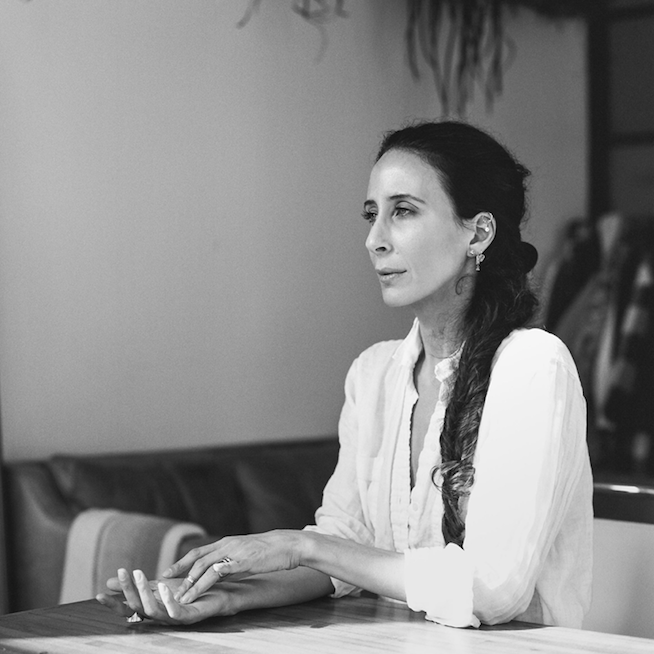
A market research firm issued a report that provides some good advice for businesses that want to leverage their corporate responsibility platforms for publicity: tread carefully. This one fashion designer is an example of how to get it right.
The market research firm Clutch is out with a new report that provides some good advice for businesses that want to leverage their corporate social responsibility (CSR) platforms for publicity: tread carefully.
The devil is in the details
The report is in the form of an article straightforwardly titled, “How Businesses Can Approach Corporate Social Responsibility and Public Relations.”
To construct the report, Clutch asked 420 U.S. consumers how they expect businesses to show their commitment to social responsibility. Two intertwining trends emerged.
First, today’s consumers do place a great deal of importance on corporate social responsibility. In fact, a significant majority expects corporations to make a commitment to social responsibility. The expectations are especially high for categories that are intimately entwined with daily life: food, technology, and fashion.
Second, this report reiterates that consumers also expect companies to back up their words with action:
“People expect businesses to do more than simply express support for a cause and call it corporate social responsibility; they want to see businesses act on social issues."
That sounds simple enough. However, the devil is in the details, as Clutch warns:
“…corporate social responsibility is not ‘one size fits all.’
“Businesses must consider their customers’ values, their brand's unique purpose, and where they can make the most impact when implementing a corporate social responsibility effort.”
This all boils down to a complicated balancing act. Clutch suggests that companies can work out an effective strategy by asking themselves three simple questions:
- What actions do my customers want?
- Which issues align with my brand?
- How am I uniquely positioned to make an impact?
Saving the planet with swimwear
That’s a lot to digest, and Clutch peppers the report with a generous dose of examples and mini case studies as illustration.
Coincidentally, earlier this week TriplePundit had an opportunity to speak with the high-end New York fashion designer Mara Hoffman, who is President of her eponymous named company, Mara Hoffman. Her company’s recent shift into the recycled materials supply chain mirrors some of the points made by Clutch.
In 2017 Mara Hoffman struck up a relationship with the fabric solutions company Unifi to use its recycled plastic fabric, REPREVE, in her swimwear collection.
If REPREVE rings some bells, back in 2015 3p took note of its use by Ford for upholstering the seats of its iconic F-150 pickup trucks.
That’s quite a leap to the world of high fashion, but in essence it is a seamless one.
“Moving in to recycled material was a natural evolution,” Hoffman explained. “Four years ago, our company was 15 years old and we were on a different trajectory. We were poised to grow, but we literally hit a wall.”
Hoffman attributes the company’s “change or die moment” four years ago to an environmental awareness sparked by her three-year-old son.
Since then, her company has embarked on a slate of CSR measures focusing on sustainable fibers, trims and packaging.
She is also keenly aware that designers and manufacturers can push the corporate social responsibility movement ahead of consumers, though she emphasizes the importance of doing so in a way that engages customers:
“It’s always hopeful and exciting to hear that consumers are holding us accountable, but the price point can be an obstacle.
"Trying to compete in this [high end] space is difficult, and you are speaking to a privileged silo.
“The important thing is that the conversation is spreading, and you can communicate and do it in a way in which people feel part of the change, and feel that their purchases do matter.”
Engagement matters
That element of communicating and engaging is a critical factor, and Hoffman’s relationship with Unifi demonstrates how partnerships and collaboration can have a broad impact on brand identity.
By choosing to feature REPREVE in the textured swimwear part of her collection, Hoffman builds on brand recognition of REPREVE as a high-performance fiber. That reputation has been established by other early adopters in the sportswear field.
The swimwear angle also connects Hoffman — and by extension, her customers — to a global community of people and businesses working to reduce ocean plastic pollution.
That echoes the approach taken by AB InBev’s Corona brand, when it launched new biodegradable six-pack rings last year. The Corona brand is built around beach lifestyle and the company takes an active role in recovering ocean waste from beaches.
Unifi also underscores and reinforces consumer engagement with Hoffman’s company by tracking the number of plastic bottles it recycles into fabric, in real time, on a REPREVE web page featuring Hoffman’s swimwear collection.
CSR and PR
Because Hoffman embraces her customers and her products in a holistic way that reflects her personal views, the publicity follows naturally.
One example occurred earlier this week, when Hoffman received a “REPREVE Champions of Sustainability Award” from Unifi in during New York Fashion Week, in recognition of her commitment to socially conscious fashion.
The award formally credits Hoffman with having a hand in Unifi’s recycled supply chain, which currently stands at 14 billion bottles (yes, that’s billion) and counting.
In a conversation with TriplePundit, Helen Sahi, Vice President of Global Corporate Sustainability for Unifi, noted that Hoffman exemplifies a trend in which both consumers and designers are growing awareness together.
“Designers are recognizing that 80 percent to 90 percent of the footprint of their product comes from their design. They are learning how to design out waste, and design for recycling,” she explained.
The association with Hoffman can also catapult Unifi into new markets, as Sahi explained in a press statement:
“The Mara Hoffman brand perfectly represents what the fashion industry can achieve when it pairs visionary leadership with sustainable materials that perform at the highest level with reduced environmental impact,” said Sahi.
This is just the beginning. Unifi has set a goal of recycling 20 billion bottles by 2020 and 30 billion by 2022.
Image credit: Mara Hoffman
Millennials’ Values Are Shaping How They Shop and Invest


More millennials are intrigued with impact investing, as they are welcoming the opportunity to invest their hard-earned savings into social and environment causes.
Millennials are considered to be great at saving money—with one survey estimating that 39 percent of them have been tucking away more than 10 percent of their salary. But they’ve been reluctant to invest it, with a 2018 study finding that 66 percent of people between 18 and 29 (and 65 percent of those 30 to 39) consider investing in the stock market “scary” or “intimidating.”
That may be changing, and the lure may well be impact investing—the opportunity to invest hard-earned savings into social and environment causes.
As TriplePundit reported last November, a study from Swell Investing found the vast majority of Gen Z (84 percent) and millennials (78 percent)are engaged in socially responsible or impact investing, or plan to invest that way in the future. Similarly, a First State Investments survey found that more than 80 percent of millennials are interested or very interested in sustainable or responsible investing.
That is a stance that resonates with Erin Lowry, author of Broke Millennial Takes On Investing: A Beginner’s Guide to Leveling Up Your Money. “I don’t like to shop at places that don’t align with my ethical and philosophical values, so why would I invest my money what way?” she asked TriplePundit.
The boycott generation
Fear of the stock market does not translate to fear at the cash register (or the online shopping portal). In 2018, 35 percent of Generation X and 33 percent of millennials participated in the boycott of a company or product they had spent money on in the past, according to a report last month from consumer research firm Comparecards.com.
That willingness to toss a product to the curb is often driven by values, with 60 percent of millennials willing to spend more on brands that are sustainable, according to the State of Fashion 2018 report by Business of Fashion (BoF) and McKinsey.
Now millennial interest in their money is turning to investments. Lowry, who has developed a following as the “Broke Millennial” providing financial advice to millennials, found that her peers were “overwhelmed” by other investing books on the market and decided to write her own.
“It is very much a beginner’s guide. You don’t need the language to start learning and understanding about investing,” she said.
A fear that it could all collapse
“A lot of millennials are a little hesitant to get into investing in the first place,” she said. And while she is aware of surveys such as the one from Swell Investing about her generation’s enthusiasm for impact investing, “I’m not sure if that is the truth or wishful thinking on the part of survey participants.”
That reluctance, she said, is born out of the Great Recession of 2008, when many millennials, just graduating college or having recently entered the workforce, “suddenly felt a lot of mistrust in the stock markets. What we understood at a young age was that it could all collapse.”
Now, ten years later, millennials may have more income to invest, but Lowry said her peers are also struggling to pay student loans, with the cost of living in expensive cities and are perhaps delaying marriage, or the purchase of a home.
“Yet I know we can do this. We can learn how to mitigate our risk and make money while also doing some good in the world if you choose impact investing,” Lowry said. “I’m very bullish about the millennial generation and where the future is going to go. It’s taken us a little longer but we’re getting there.”
Making your voice heard
Lowry said she invested in her first index fund in 2012. The funds in which she invests are ESG (environmental, social and environmental) or SRI-compliant, she said, but she chooses not to exclusively dedicate her investments to impact investing. “I think it’s about finding a healthy balance and it’s important to be diversified,” she explained.
Managers of SRI funds also have to do a better job to impress millennials, Paulina Skypala wrote in the Financial Times. “Investing in funds with one of these labels may ease the conscience but, on the evidence available, it won’t slow climate change, improve biodiversity or take plastic out of the oceans. There is also no guarantee that managers who offer sustainable funds will push investee companies to make the changes that could lead to such outcomes, or use their shareholder vote against company management.”
Lowry argues that millennials can make their voices heard as investors, much as they do as activists.
“If you are a client with a particular brokerage and you have an issue with a company in a fund, make your voice heard,” Lowry told TriplePundit. “There is power in numbers and you are not without power.”
Image credit: Pixabay
New Plastic Pollution Solution May Produce Sustainable Fuel
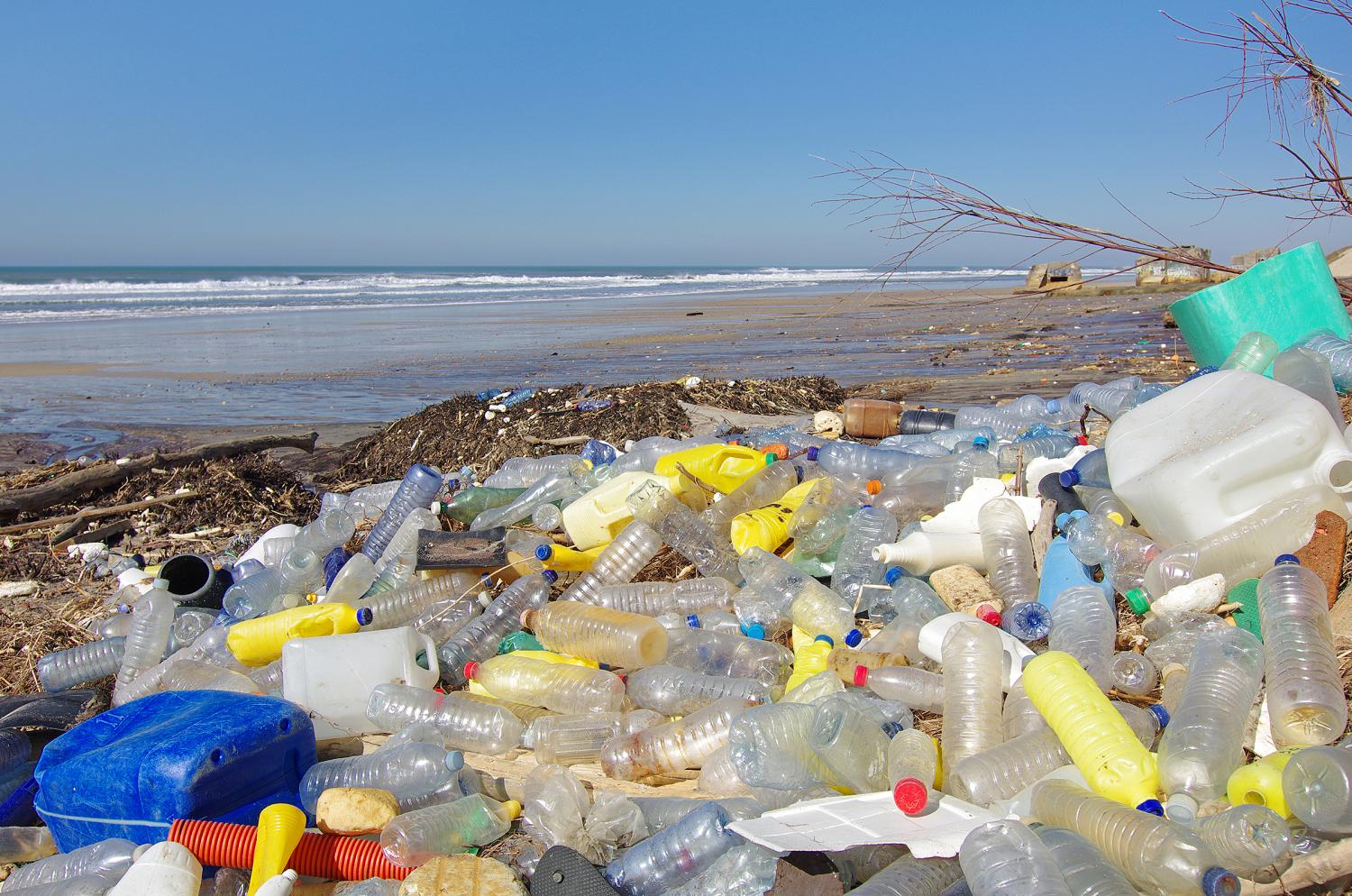
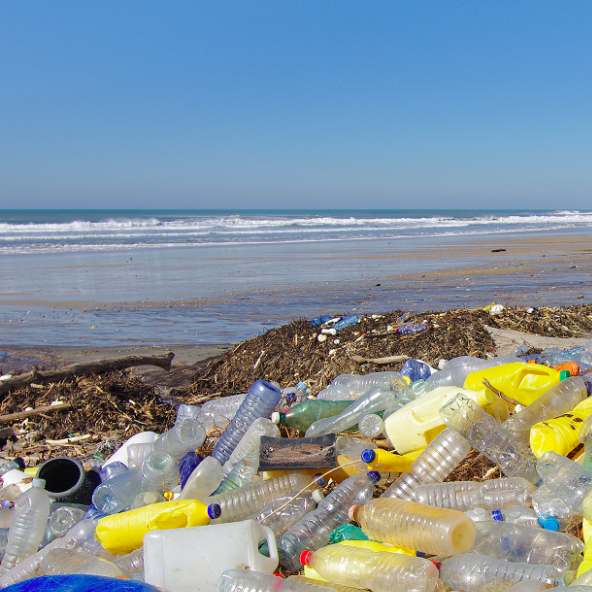
The ultimate solution to plastic pollution is to generate less of it. In the meantime, Purdue University researchers are working on new ways to recycle it into fuel.
The ultimate solution to plastic pollution is to generate less of it. In the meantime, researchers are working on new ways to recycle it. One new promising area of research is under way at Purdue University. Last week, the school reported that a team of scientists at its Davidson School of Chemical Engineering has invented a system for converting plastic waste to liquid fuel and other products.
A business response to plastic pollution
The new research provides a new pathway for both a bottom line and a sustainable business response to the plastic pollution crisis.
Companies have achieved some success with the plastic-to-plastic recycling model, in which old plastic is used to make new plastic items. However, the relatively narrow scope of that market leaves it open to disruption. That problem came to light last year, when China placed a ban on incoming trash for recycling.
Recycling plastic into liquid fuels and other new uses represents a significant step up from the conventional model. It spreads the recycled plastic supply chain out into the transportation fuel sector and other areas of application.
It is also a step up from the conventional approach to recycling plastic for fuel. Until now, the waste-to-energy operations typically involved incinerating plastic along with other trash to produce heat, and then converting that heat into electricity.
Converting plastic into liquid fuels is a more sophisticated approach, with the potential for a wider range of applications.
According to lead researcher Linda Wang, the Purdue team aims to incentivize plastic recycling by focusing on supply chain streams that add value, including “polymers, naphtha (a mixture of hydrocarbons), or clean fuels.”
Specifically, the research is focused on converting polyolefin. Polyolefin is a building block for plastics 2, 4 and 5, among other materials.
The ocean plastic pollution problem was Wang’s initial inspiration for the research project, but polyolefin covers much more ground. It is used for making fuel tanks and bottle caps as well as plastic bottles (#2), liquid containers, tubing and plastic wrap (#4), and various forms of piping, carpeting, roofing materials and auto parts (#5).
Polyolefin also factors into the nets and ropes used in fishing gear, which is a major source of ocean plastic pollution. By adding more value to the plastic recycling market, the Purdue innovation could stimulate efforts to harvest and recycle old fishing gear — or better yet, take more steps to prevent the loss of fishing gear.
High tech plastic pollution solution: how it works
Along with Wang, the new research is credited to an interdisciplinary team that includes the Purdue School of Engineering Technology, through its Fuel Laboratory of Renewable Energy of the School of Engineering Technology.
The team developed a two-step approach based on heating water past the boiling point. The first step of the process converts plastic into naphtha.
The rest is practically gravy, as described by the Purdue news team:
“Once the plastic is converted into naphtha, it can be used as a feedstock for other chemicals or further separated into specialty solvents or other products.”
Yes, but does it work economically?
According to Wang, the conversion rate of the new system could reach up to 90 percent, which indicates a promising pathway to commercialization.
In addition to the direct economic incentive, the system could attract investors who see value in creating a portfolio that addresses an existing problem — ocean plastic pollution — in addition to creating a sustainable supply chain.
The introduction to the team’s research paper, recently published in the journal Sustainable Chemistry & Engineering, emphasizes the benefits for companies and investors that value a solid sustainability profile:
“About five billion tons of plastic waste have accumulated in landfills and the natural environment over the past 50 years. Polypropylene [a common form of polyolefin] waste accounts for about 23 percent of the total plastic waste. Converting PP waste into useful products can reduce the accumulated waste and associated risks to the environment and human health.”
Ocean plastic pollution is only part of the problem
Aside from ocean plastic waste problem, the breakthrough could help solve some significant lifecycle issues in other areas.
One area that comes to minds is the plastic used in children’s toys and accessories, which can mean anything from palm-sized dolls to play sets and child-sized cars, play houses and furniture.
Most of these products have a severely limited lifespan, ranging from just a few months in the case of infants and toddlers to perhaps a few years for young children.
As with all plastic, the best solution is to use less. Absent any other incentive to change habits, though, a more efficient approach to recycling could provide businesses with incentive to reclaim more plastic for a broader span of uses.
Is your business ready for a giant leap?
Purdue is highlighting the new research as part of its “Giant Leaps” 150th anniversary celebration of global innovation.
It’s not all happy talk. In the sustainability field, for example, Purdue is also highlighting the here-and-now impacts of climate change, and discussing the effort it will take to scale up and accelerate climate solutions.
Climate change is forcing a structural change in the global economy. Businesses and investors who see opportunity in the sustainability field are the ones who will ride the next wave of economic expansion.
Image credit: Purdue University/stock photo